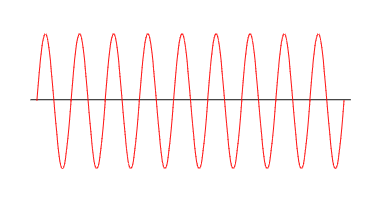There is some truth in the statement but it's a lot more complicated than the photon having a radius.
We think of a light beam as being a very long wave looking something like this:
where in principle the wave extends out to infinity in both directions. When we have a single photon this means the photon is spread out over a very large distance - we say the photon is delocalised over a large distance.
But it's possible to localise the photon into a smaller region to get a wave packet instead of an infinite wave. This looks something like:
In this case we can think of the photon having a size of about the length of the wave packet, which in this example is about five wavelengths.
But there's a wrinkle with this. It turns out that to create a wave packet we have to create a mixture of different photons with different wavelengths. So the wave packet in the diagram above is actually a mix of different photons. Decreasing the size of the photon has turned it into a mixture of different photons.
The smaller we make the wave packet the more mixed up the photons in the packet become, and at some point we can no longer usefully describe it as a single photon any more. So there is a lower limit to the size we can make the photon as below this limit it isn't even approximately a single photon any more.
This lower limit is rather vaguely defined but it is going to be around the wavelength of the photon. It is in this sense that we could say the minimum radius of a photon is about its wavelength. However I must emphasise that a photon is not like a little ball of light and doesn't really have a radius, so you need to treat statements about the size of a photon with some care.


